#Dwight Eisenhower
Explore tagged Tumblr posts
Text

47 notes
·
View notes
Text
the beginning of the cold




finished making the cold war era potus girlies
here's part 1 and 2 (context for this mini art series is in the captions of these posts)
#shitpost#cursed anime girlification(?)#us presidents#us history#harry s truman#dwight eisenhower#john f kennedy#lyndon b. johnson#richard nixon#gerald ford#jimmy carter#ronald reagan#george hw bush
110 notes
·
View notes
Text
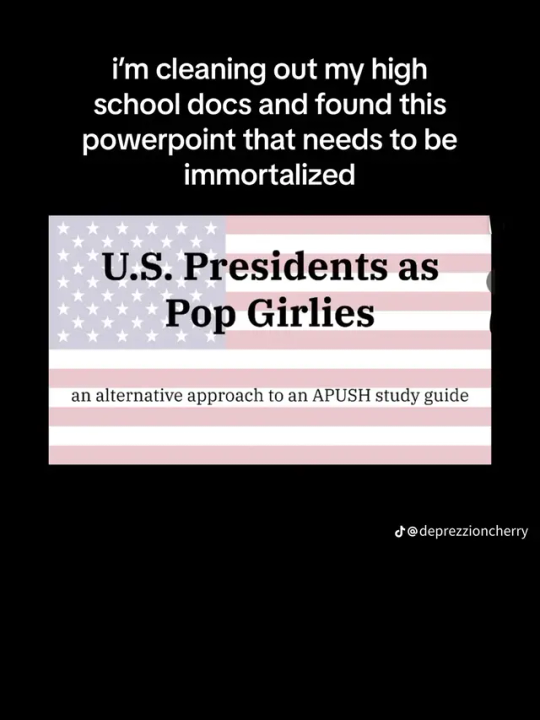
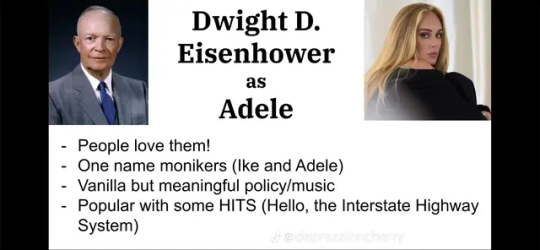
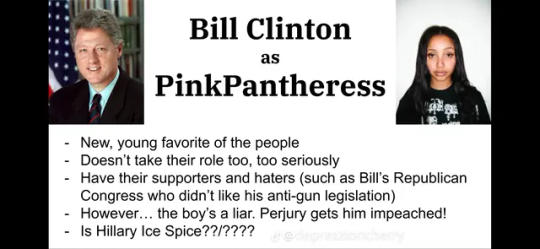

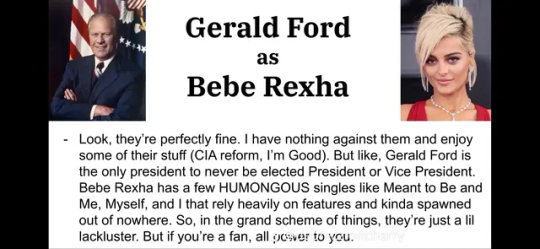
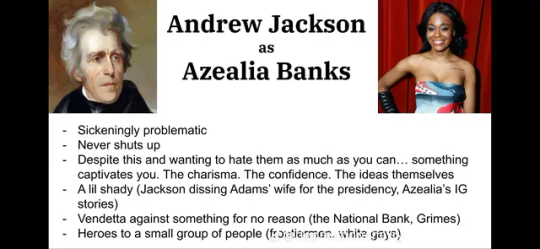

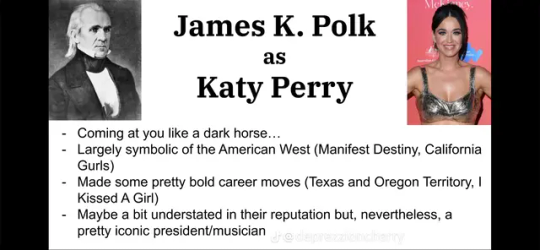
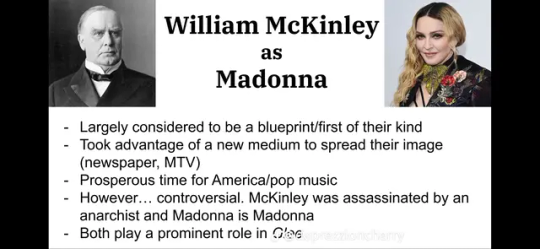
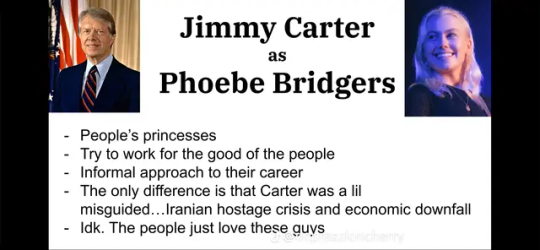
Saw this on TikTok
As someone who has special interests on US presidents and loves pop culture, these are on point!
Part 2
#us history#us presidents#dwight eisenhower#bill clinton#george washington#gerald ford#andrew jackson#james madison#james k polk#william mckinley#jimmy carter
88 notes
·
View notes
Text

















Two post in one edition from my main
Found these cool presentations on my fyp back in August. As someone who loves pop culture and had special interests on US presidents, all of them are on point!
#american history#us history#us presidents#dwight eisenhower#bill clinton#george washington#gerald ford#andrew jackson#james madison#james k polk#william mckinley#jimmy carter#grover cleveland#warren g harding#warren harding#theodore roosevelt#teddy roosevelt#james monroe#ronald reagan#calvin coolidge#fdr#franklin d. roosevelt
22 notes
·
View notes
Text



Letter from President Eisenhower to E. E. "Swede" Hazlett
Collection DDE-EPRES: Eisenhower, Dwight D.: Papers as President of the United StatesSeries: Dwight D. Eisenhower DiaryFile Unit: Dwight D. Eisenhower Diary October 1954 (1)
October 23, 1954 Dear Swede: Your judgement on the spinning reel coincides exactly with mine. Since 1944 when I first encountered these gadgets in France, I have been the recipient of various types of spinners -- I should say one arrives about every sixty days. I leave them to those who like them. For my own fishing, I keep half a dozen fly rods ranging from about 1 - 1/2 ounces to 4-1/2, and I keep three favorite casting rods. I think this combination ought to see me through the fishing seasons left to me. [[circular ink stamp "The Dwight D. Eisenhower Library"]] I skip over your comments on the election campaign. I have appeared before a number of audiences, but I strive to deal only with substantive matters -- with fact and logical deduction -- while staying out of political bickering. When you mention Adlai, I again find myself in complete agreement with you, except that I doubt that he is a very dangerous opponent. However, if he should slip into a position of real responsibility, he would represent a great risk for the country. As to "four-headed" foreign policy, the Democrats never succeeded in keeping people like McCarran from sounding off when they so chose. So if a Republican Senator lets go once in a while, I don't know what we can do about it, even though I deplore the misunderstandings they create. So far as Dulles is concerned, he has never made a serious pronouncement, agreement or proposal without complete and exhaustive consultation with me in advance and, of course, my approval. If your friend Senator Ervin would take the trouble to look up the record, he would see that Nixon belonged in the same school, although he admittedly tries to put his pronouncements into more colorful language. [complete transcription at link]
30 notes
·
View notes
Text
girl: u best not be dwight cuntenhower when I get there

#this cunty ass photo im gone#ike for the straights and gays#us presidents#us history#potus#history#amhis#dwight eisenhower
47 notes
·
View notes
Text

A rare view of the Statue of Liberty from the balcony on its torch. This point of view has been closed since 1916.
* * * *
LETTERS FROM AN AMERICAN
November 30, 2024
Heather Cox Richardson
Dec 01, 2024
Cas Mudde, a political scientist who specializes in extremism and democracy, observed yesterday on Bluesky that “the fight against the far right is secondary to the fight to strengthen liberal democracy.” That’s a smart observation.
During World War II, when the United States led the defense of democracy against fascism, and after it, when the U.S. stood against communism, members of both major political parties celebrated American liberal democracy. Democratic presidents Franklin Delano Roosevelt and Harry Truman and Republican president Dwight D. Eisenhower made it a point to emphasize the importance of the rule of law and people’s right to choose their government, as well as how much more effectively democracies managed their economies and how much fairer those economies were than those in which authoritarians and their cronies pocketed most of a country’s wealth.
Those mid-twentieth-century presidents helped to construct a “liberal consensus” in which Americans rallied behind a democratic government that regulated business, provided a basic social safety net, promoted infrastructure, and protected civil rights. That government was so widely popular that political scientists in the 1960s posited that politicians should stop trying to court voters by defending its broadly accepted principles. Instead, they should put together coalitions of interest groups that could win elections.
As traditional Republicans and Democrats moved away from a defense of democracy, the power to define the U.S. government fell to a small faction of “Movement Conservatives” who were determined to undermine the liberal consensus. Big-business Republicans who hated regulations and taxes joined with racist former Democrats and patriarchal white evangelicals who wanted to reinforce traditional race and gender hierarchies to insist that the government had grown far too big and was crushing individual Americans.
In their telling, a government that prevented businessmen from abusing their workers, made sure widows and orphans didn’t have to eat from garbage cans, built the interstate highways, and enforced equal rights was destroying the individualism that made America great, and they argued that such a government was a small step from communism. They looked at government protection of equal rights for racial, ethnic, gender, and religious minorities, as well as women, and argued that those protections both cost tax dollars to pay for the bureaucrats who enforced equal rights and undermined a man’s ability to act as he wished in his place of business, in society, and in his home. The government of the liberal consensus was, they claimed, a redistribution of wealth from hardworking taxpayers—usually white and male—to undeserving marginalized Americans.
When voters elected Ronald Reagan in 1980, the Movement Conservatives’ image of the American government became more and more prevalent, although Americans never stopped liking the reality of the post–World War II government that served the needs of ordinary Americans. That image fed forty years of cuts to the post–World War II government, including sweeping cuts to regulations and to taxes on the wealthy and on corporations, always with the argument that a large government was destroying American individualism.
It was this image of government as a behemoth undermining individual Americans that Donald Trump rode to the presidency in 2016 with his promises to “drain the swamp” of Washington, D.C., and it is this image that is leading Trump voters to cheer on billionaires Elon Musk and Vivek Ramaswamy as they vow to cut services on which Americans depend in order to cut regulations and taxes once again for the very wealthy and corporations.
But that image of the American government is not the one on which the nation was founded.
Liberal democracy was the product of a moment in the 1600s in which European thinkers rethought old ideas about human society to emphasize the importance of the individual and his (it was almost always a “him” in those days) rights. Men like John Locke rejected the idea that God had appointed kings and noblemen to rule over subjects by virtue of their family lineage, and began to explore the idea that since government was a social compact to enable men to live together in peace, it should rest not on birth or wealth or religion, all of which were arbitrary, but on natural laws that men could figure out through their own experiences.
The Founders of what would become the United States rested their philosophy on an idea that came from Locke’s observations: that individuals had the right to freedom, or “liberty,” including the right to consent to the government under which they lived. “We hold these truths to be self-evident,” Thomas Jefferson wrote, “that all men are created equal, that they are endowed by their Creator with certain unalienable Rights, that among these are Life, Liberty and the pursuit of Happiness,” and that “to secure these rights, governments are instituted among men, deriving their just powers from the consent of the governed.”
In the early years of the American nation, defending the rights of individuals meant keeping the government small so that it could not crush a man through taxation or involuntary service to the government or arbitrary restrictions. The Bill of Rights—the first ten amendments to the Constitution—explicitly prohibited the government from engaging in actions that would hamper individual freedom.
But in the middle of the nineteenth century, Republican president Abraham Lincoln began the process of adjusting American liberalism to the conditions of the modern world. While the Founders had focused on protecting individual rights from an overreaching government, Lincoln realized that maintaining the rights of individuals required government action.
To protect individual opportunity, Lincoln argued, the government must work to guarantee that all men—not just rich white men—were equal before the law and had equal access to resources, including education. To keep the rich from taking over the nation, he said, the government must keep the economic playing field between rich and poor level, dramatically expand opportunity, and develop the economy.
Under Lincoln, Republicans reenvisioned liberalism. They reworked the Founders’ initial stand against a strong government, memorialized by the Framers in the Bill of Rights, into an active government designed to protect individuals by guaranteeing equal access to resources and equality before the law for white men and Black men alike. They enlisted the power of the federal government to turn the ideas of the Declaration of Independence into reality.
Under Republican president Theodore Roosevelt, progressives at the turn of the twentieth century would continue this reworking of American liberalism to address the extraordinary concentrations of wealth and power made possible by industrialization. In that era, corrupt industrialists increased their profits by abusing their workers, adulterating milk with formaldehyde and painting candies with lead paint, dumping toxic waste into neighborhoods, and paying legislators to let them do whatever they wished.
Those concerned about the survival of liberal democracy worried that individuals were not actually free when their lives were controlled by the corporations that poisoned their food and water while making it impossible for individuals to get an education or make enough money ever to become independent.
To restore the rights of individuals, progressives of both parties reversed the idea that liberalism required a small government. They insisted that individuals needed a big government to protect them from the excesses and powerful industrialists of the modern world. Under the new governmental system that Theodore Roosevelt pioneered, the government cleaned up the sewage systems and tenements in cities, protected public lands, invested in public health and education, raised taxes, and called for universal health insurance, all to protect the ability of individuals to live freely without being crushed by outside influences.
Reformers sought, as Roosevelt said, to return to “an economic system under which each man shall be guaranteed the opportunity to show the best that there is in him.”
It is that system of government’s protection of the individual in the face of the stresses of the modern world that Franklin Delano Roosevelt, Harry Truman, Dwight Eisenhower, and the presidents who followed them until 1981 embraced. The post–World War II liberal consensus was the American recognition that protecting the rights of individuals in the modern era required not a weak government but a strong one.
When Movement Conservatives convinced followers to redefine “liberal” as an epithet rather than a reflection of the nation’s quest to defend the rights of individuals—which was quite deliberate—they undermined the central principle of the United States of America. In its place, they resurrected the ideology of the world the American Founders rejected, a world in which an impoverished majority suffers under the rule of a powerful few.
LETTERS FROM AN AMERICAN
HEATHER COX RICHARDSON
#Statue of Liberty#Movement conservatives#liberal consensus#FDR#Harry Truman#Dwight Eisenhower#post-World War II#American History#Letters fRom an American#Heather Cox richadrdson#history
16 notes
·
View notes
Text
Happy President's Day, here's Noam Chomsky demonstrating why every US president post- WWII would be hanged if the Nuremburg Principles were applied. (Presented in two parts bc Tumblr is a bih with the file size limit)
(Pt.2)
#united front#video#anticapitalism#communism#socialism#imperialism#capitalism#anti imperialism#antifascism#noam chomsky#usa#united states of america#america#us presidents#presidents day#dwight eisenhower#john f kennedy#lyndon b. johnson#richard nixon#gerald ford#jimmy carter#ronald reagan#george hw bush#bill clinton#george w bush
10 notes
·
View notes
Text
i got bored and drew us presidents as warrior cats







also list of cat breeds they are bc why not
Kennedy(moonstar): Maine coon with a bobtail (requested by my friend Lee)
Nixon(waterstar): oriental longhair
Jefferson(Papyrusstar): American curl
Eisenhower(scarstar): sphinx cat (requested by @thisfellerdownathebowlingalley )
Teddy Roosevelt(Bearstar): Somali/norwegian forest cat
Washington(George/Georgestar): American shorthair
Coolidge(Silentstar): Siamese cat
Alt designs:



#us presidents#tedposting#foolonthesubmarine#theodore roosevelt#richard nixon#thomas jefferson#jfk#john f kennedy#dwight d. eisenhower#dwight eisenhower#calvin coolidge#warrior cats#warrior cats au#presidents#will be taking requests#might do FDR next#i have a full list of their warrior cat names btw#my art#art#fanart
27 notes
·
View notes
Text

eisenhower looks likes beans from rango
14 notes
·
View notes
Text


#Poll#President#Presidents#President of the United States#US President#Presidential Poll#America#Tumblr Poll#Tournament Poll#Dwight Eisenhower#Richard Nixon#Note: we do NOT own this artwork#Finals
21 notes
·
View notes
Text

122 notes
·
View notes
Text

eisenhower pink
i really liked mamie eisenhower's first inaugural ball gown but then I was like:

"what if ike wore it?" and so to lessen the cursedness of that original thought i used my anime girl series version of ike (+ anime dude!mamie)
#shitpost#cursed anime girlification(?)#us history#us presidents#historical rpf#i think???#dwight eisenhower#mamie eisenhower
55 notes
·
View notes
Text


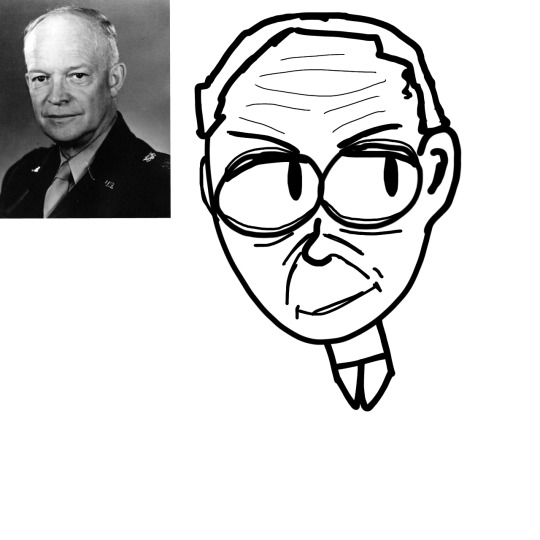
i practiced drawing u.s presidents. why
30 notes
·
View notes
Text
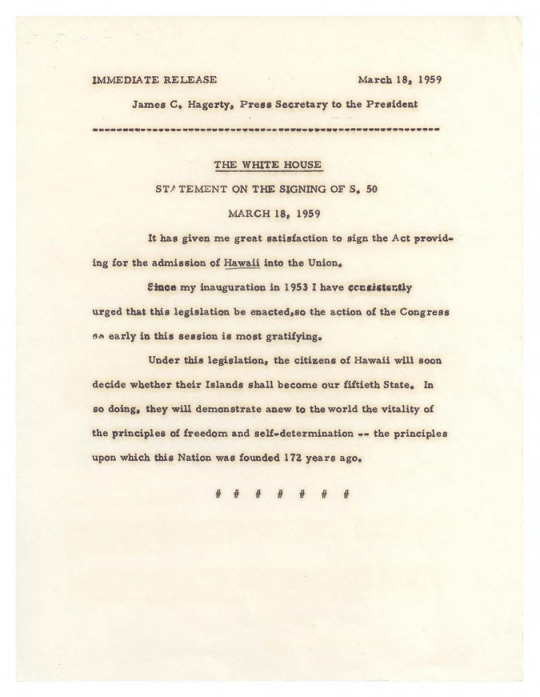
Press Release, President Dwight D. Eisenhower's Statement on the Signing of S. 50, the Act Providing for the Admission of Hawaii into the Union
Collection DDE-WHCF: White House Central Files (Eisenhower Administration)Series: Official FilesFile Unit: OF 147-E Hawaii (10)
Immediate Release March 18, 1959 James C. Hagerty, Press Secretary to the President The White House Statement on the Signing of S. 50 March 18, 1959 It has given me great satisfaction to sign the Act providing for the admission of Hawaii into the Union. Since my inauguration in 1953 I have consistently urged that this legislation be enacted, so the action of the Congress as early in this session is most gratifying. Under this legislation, the citizens of Hawaii will soon decide whether their Islands shall become our fiftieth State. In so doing, they will demonstrate anew to the world the vitality of the principles of freedom and self-determination -- the principles upon which this Nation was founded 172 years ago. # # # # # # #
28 notes
·
View notes
Text

5 notes
·
View notes